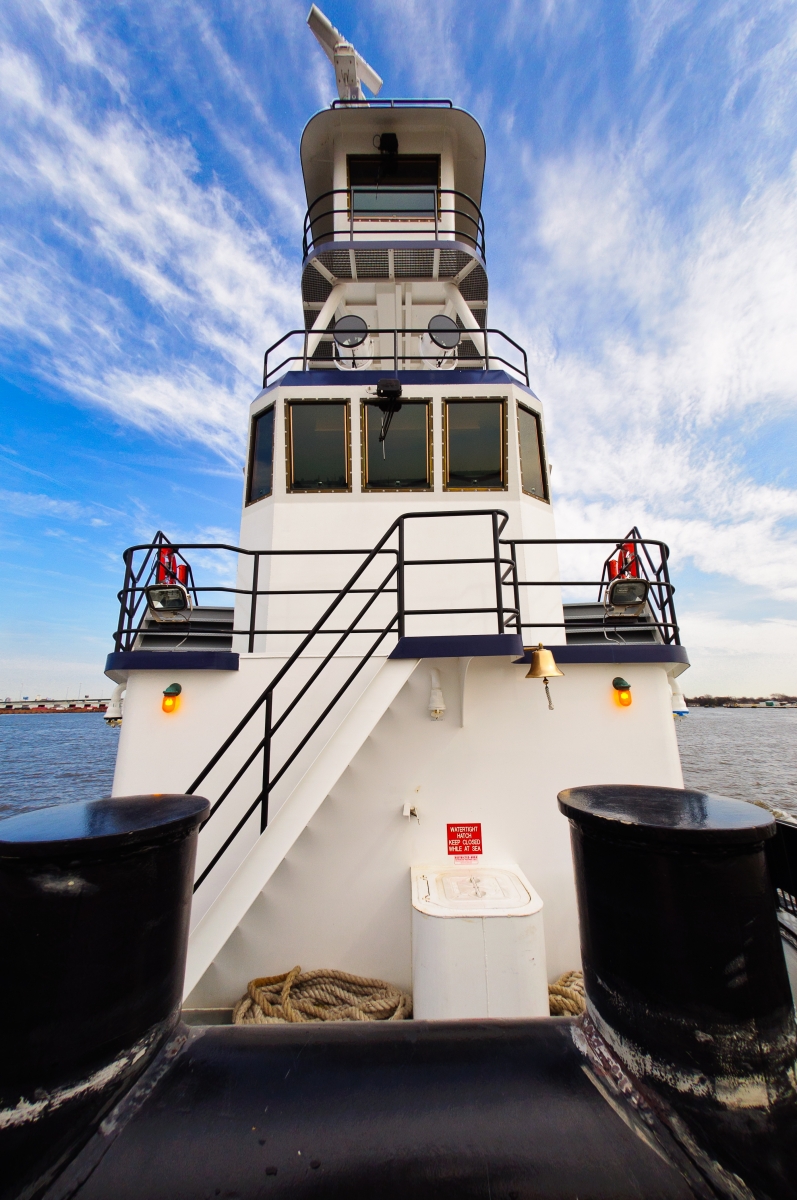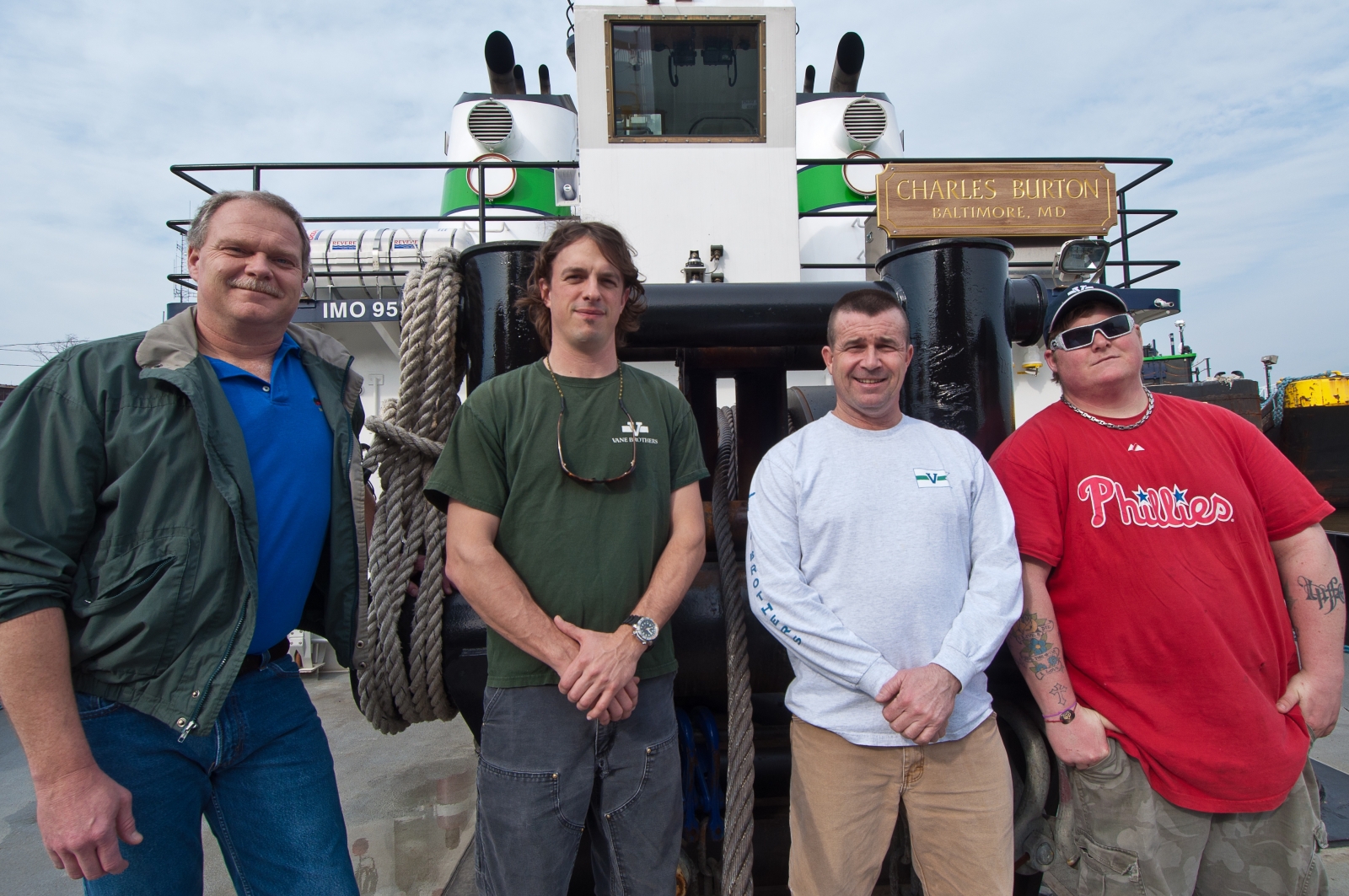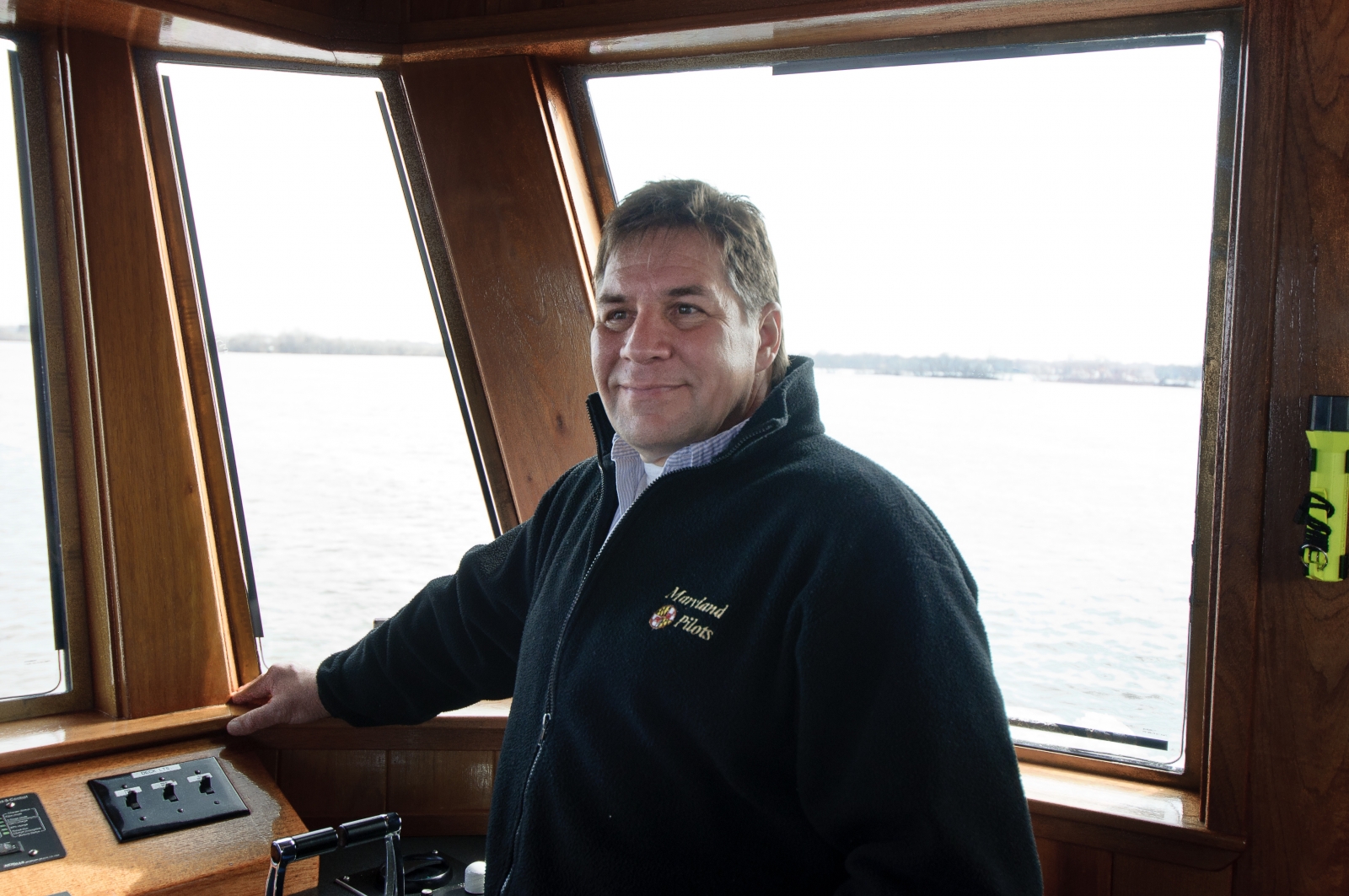Over the past eight years, 21 new Vane Brothers tugs have been delivered from Thoma-Sea Boat Builders, of Houma, La., and Chesapeake Shipbuilding, of Salisbury, Md.
 |
|
Vane Brothers' Charles Burton, shown here operating in Philadelphia, is a 94-foot, 3,000-hp Sassafras-class tug built by Chesapeake Shipbuilding in Salisbury, Md., and designed by Frank Basile's firm, Entech and Associates in Houma, La. The vessel's principal duties entail bunkering in the shallower waters of the Eastern Seaboard. (Brian Gauvin photo) |
Charles Burton is one of six 94-foot, 3,000-hp Sassafras-class vessels built at the Chesapeake yard. It is a smaller version of the 15 100-foot, 4,200-hp Patapsco-class tugs built at Thoma-Sea. All of the tugs were designed by Frank Basile's company, Entech and Associates in Houma, La.
"We asked Frank to design some boats for the 30,000-barrel bunkering barges," said Jim Demske, port captain for Vane Brothers in Baltimore. The intent was to design a boat, primarily for bunkering on the shallower rivers and channels of the Eastern Seaboard. "There was no sense in building more of the 4,200-hp, 100-footers. We needed more maneuverability than we needed power."
All six of the Sassafras-class boats are based in Baltimore and will serve there and in other Eastern Seaboard ports, including New York, Philadelphia, Norfolk, Va., and Charleston, S.C.
 |
|
The crew of Charles Burton, from left to right: Capt. Darrell Grover, AB Curtis Armstrong, Chief Engineer Kenny Mooney and Ordinary Seaman Dylan Parks. Although based in Baltimore, the tug will serve other Eastern ports, including New York; Philadelphia; Norfolk, Va., and Charleston, S.C. (Brian Gauvin photo) |
Demske, who has charted every nut and bolt of all 21 boats, worked closely with Basile to modify the Patapsco-class design, adopting an open wheel and oversized barn-door-rudder configuration for the Sassafras tugs.
"With the open wheels you have so much more maneuverability,†said Darren Grover, captain on Charles Burton. "You can flank a barge right into a slip."
Demske also worked hard on improving the upper wheelhouse, where the captain and mate spend the majority of their time on many of the jobs. The addition of working windows and increasing their angle to minimize reflections make the long stays aloft more comfortable. And beefing up the diameter of the stanchions lent a more substantial look to the tugs.
 |
|
Jim Demske, Vane Brother's port captain in Baltimore, played a key role in the development of the Sassafras-class tugs, with their open wheels and barn-door rudders. (Brian Gauvin photo) |
The Sassafras boats have Caterpillar 3512 C diesels, Twin Disc 6:1 gears, John Deere generators, and JonRie InterTech towing winches.
Much of the steel and many components in the Sassafras boats were supplied by companies in the Houma area, Demske's second home during the Patapsco program. He maintains that you can stand on a street corner in Houma and within a few blocks find the designers, materials, suppliers and craftsmen to build a tugboat.
This past summer the last two boats in the Sassafras series, Oyster Creek and Hunting Creek, left the Chesapeake yard, ending, for now, one of the most substantial building programs in the country for some time.
